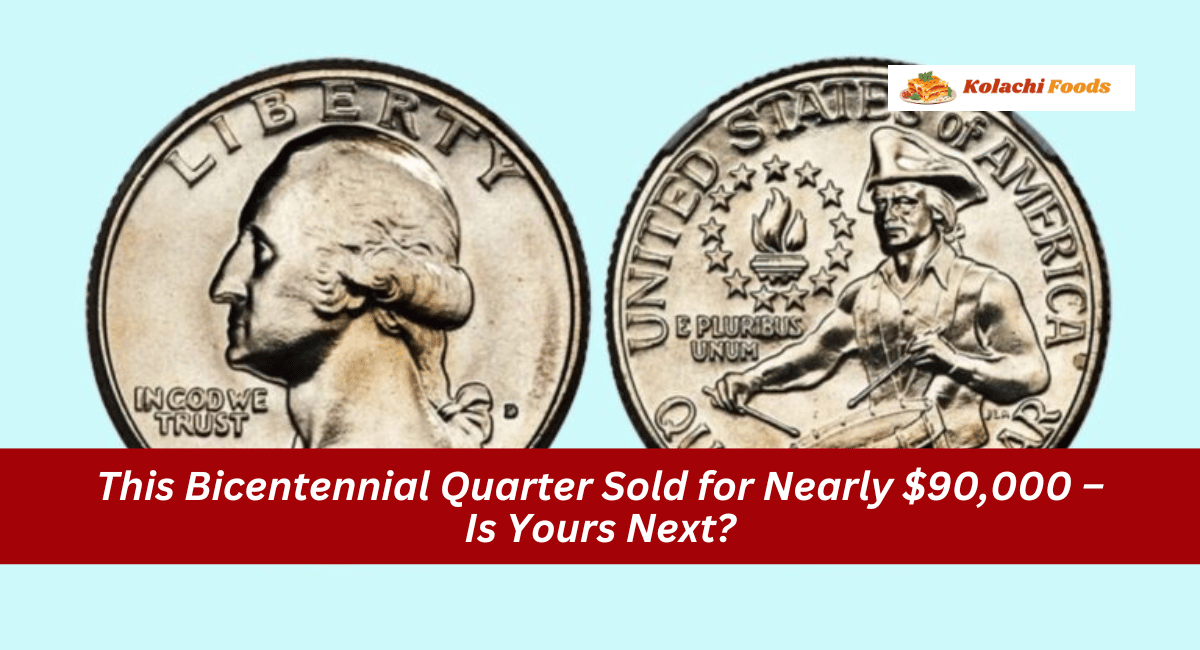The 1976 Bicentennial Quarter continues to be a gem for coin collectors and enthusiasts alike. This quarter, commemorating the 200th anniversary of the United States’ independence, was created with a unique design that captivates both seasoned collectors and casual finders.
A Quick Overview of the Bicentennial Quarter
Struck in 1976, the Bicentennial Quarter features the dual date “1776-1976” and a special reverse design showing a colonial drummer. Millions of these quarters were minted and circulated, but not all are created equal. Certain variations of this iconic coin can be worth significantly more than its face value.
What Makes the 1976 Bicentennial Quarter Special?
The allure of the 1976 Bicentennial Quarter lies not only in its historical significance but also in the variety of versions that exist. While many of these coins are still in circulation, some can fetch impressive prices at auction or among collectors.
Key Variants of the Bicentennial Quarter
1. Standard Bicentennial Quarter: This is the typical version found in circulation, and while it’s a piece of history, it usually holds only its face value.
2. 1976 Silver Bicentennial Quarter: Struck on a 40% silver planchet, these quarters were not meant for circulation and are more valuable, especially if found in uncirculated condition.
3. Error Coins: Mistakes happen, even at the mint. Error coins, including those with off-center strikes or double dies, can be worth hundreds or even thousands of dollars, depending on their rarity and condition.
Rare Features that Boost Value
When evaluating the worth of a Bicentennial Quarter, collectors look for specific features that can significantly increase its value. Below are some features to keep an eye out for:
- Mint Mark: Coins with an “S” mint mark, indicating they were minted in San Francisco, are often proof or silver versions and thus more valuable.
- Condition: Coins in pristine, uncirculated condition are always in high demand and can command better prices at auction.
Potential Value of Bicentennial Quarters
Here’s a quick look at some common Bicentennial Quarter variants and their potential values:
| Coin Name | Mint Mark | Estimated Value | Special Features | Year |
|---|---|---|---|---|
| 1976 Bicentennial Quarter | No Mint Mark | $90,000+ | Dual date “1776-1976” | 1976 |
| 1976 Silver Bicentennial Quarter | “S” Mint Mark | $1,000+ | 40% Silver Planchet | 1976 |
| 1976 Bicentennial Error Quarter | Varies | $500 to $10,000+ | Errors like double dies or off-center strikes | 1976 |
| 1976 Proof Bicentennial Quarter | “S” Mint Mark | $100+ | Proof version, not for circulation | 1976 |
FAQs
How can I tell if my Bicentennial Quarter is valuable?
To determine the value of your Bicentennial Quarter, check for special features like silver content, mint errors, or proof markings. Coins that are in uncirculated condition with no wear or damage are typically more valuable.
Where can I sell a valuable Bicentennial Quarter?
You can sell valuable Bicentennial Quarters through auction houses, coin dealers, or online platforms like eBay. Before selling, it’s a good idea to have your coin professionally appraised to know its true value.
Are all Bicentennial Quarters valuable?
Not all Bicentennial Quarters hold significant value. Most of the coins in circulation are worth only their face value of 25 cents. Only specific versions, such as those with mint errors or silver content, can be highly sought after.
What mint marks should I look for on a Bicentennial Quarter?
Look for an “S” mint mark, which indicates a proof or silver version of the quarter. Additionally, certain error coins from other mints, such as Philadelphia or Denver, may also have increased value.
Can I still find valuable Bicentennial Quarters in circulation today?
Yes! While it’s rare, you can still find valuable Bicentennial Quarters in pocket change or rolls of coins from the bank. Always keep an eye out when handling coins.
Tips for Collecting Bicentennial Quarters
If you’re keen on collecting Bicentennial Quarters, here are a few tips to enhance your collection:
1. Educate Yourself: Familiarize yourself with the different types of Bicentennial Quarters and their features. Knowledge is power when it comes to spotting valuable coins.
2. Join a Coin Club: Connecting with other collectors can provide valuable insights and opportunities to trade or sell coins.
3. Inspect Coins Carefully: When going through your change, take the time to look closely at each coin. Small details can make a significant difference in value.
4. Invest in Coin Supplies: Protect your valuable coins with proper storage supplies like coin holders and albums. This will help maintain their condition and value over time.
5. Stay Updated: The coin market can fluctuate, so keeping up with trends and prices can help you make informed decisions about buying or selling.
Conclusion:
The 1976 Bicentennial Quarter is more than just a piece of currency; it’s a symbol of American history and a potential treasure waiting to be discovered. While many of these quarters hold only their face value, certain variants can be incredibly valuable.
Whether you’re a seasoned collector or just starting, taking the time to search through your change could lead to a hidden gem worth thousands of dollars. Keep an eye out for those special features, and you might just find the next valuable Bicentennial Quarter hiding in your wallet!
READ MORE: The Bicentennial Quarter Priced at Nearly $100,000 – And 4 More Rare Coins

